In the Ambitious Bid to Reinvent South Baltimore, Justice Concerns Remain
Harm City: Fourth in a series about environmental justice and climate adaptation in Baltimore’s neighborhoods.
Brad Rogers, the maestro of Middle Branch, drives over the Hanover Street Bridge that crosses the Patapsco River in South Baltimore, talking with enthusiasm, his head filled with big ideas about the best ways to reinvent the city.
With Brett Berkley, his environmental consultant, beside him in the front seat of his well-worn Toyota Camry, Rogers is heading for a big empty parking lot next to Medstar Harbor Hospital in the Cherry Hill neighborhood, so that he and Berkley can brainstorm about the project that’s consuming them: Reimagine Middle Branch. From there, Rogers has a meeting scheduled at the offices of Cherry Hill Strong, a community development nonprofit, to talk about food deserts.
Reimagine Middle Branch, an outgrowth of the city’s 2015 South Baltimore Gateway Master Plan, is a $175 million effort to redevelop 19 neighborhoods along one of the Chesapeake Bay’s most neglected shorelines, the 11-mile Middle Branch of the Patapsco River. The mouth of the Patapsco forms Baltimore Harbor before emptying into the bay, and the city’s Inner Harbor, the faded jewel of its downtown rebirth at Harborplace, is the Northwest Branch of the Patapsco.
“People don’t really see Baltimore as a Chesapeake city. They just know the Inner Harbor is a waterfront, abstracted from a larger geographic context,” Rogers said, explaining that the Reimagine Middle Branch team was “working to transform this forgotten waterfront into Baltimore’s next great waterfront.”
“If we do our job right,” he said, “the Middle Branch will be to Baltimore in the 21st century, what the Inner Harbor was in the 20th century, first and foremost for the residents who live there.”
Rogers is executive director of the South Baltimore Gateway Partnership, a nonprofit created in 2016 to help implement the master plan with $7 million to $9 million a year in funding from the nearby Horseshoe Casino Baltimore, as required by state law.
“There is no organization that does what we do the way we do it with the funding that we have. We’re a unicorn,” Rogers said, explaining that the partnership had already invested over $50 million in Reimagine Middle Branch.
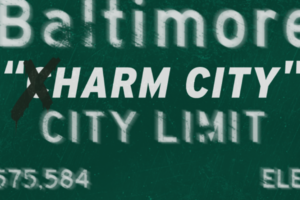
The plan seeks to connect South Baltimore’s working-class communities of color, many cut off from the shoreline by highways and industrial facilities, with parks, trails, housing, commercial development and new community amenities in ways that address the challenges presented by climate change and systemic racism.
As he and Berkley approached Medstar, Rogers cited one new community jewel: the Middle Branch Fitness and Wellness Center, a 35,000-square-foot public recreation facility that includes three swimming pools, a gym and basketball court, a fitness studio, an indoor walking track and a community room.
“It’s an incredible, beautiful facility that makes good on the promise that was broken for generations,” said Rogers, who believes industrialization and environmental injustices last century fragmented the South Baltimore communities and turned them into isolated islands.
But Rogers, with 200,000 miles on his Camry, understands the challenges in achieving consensus while working with neighborhoods that have come, often with good reason, to mistrust government and the private sector.
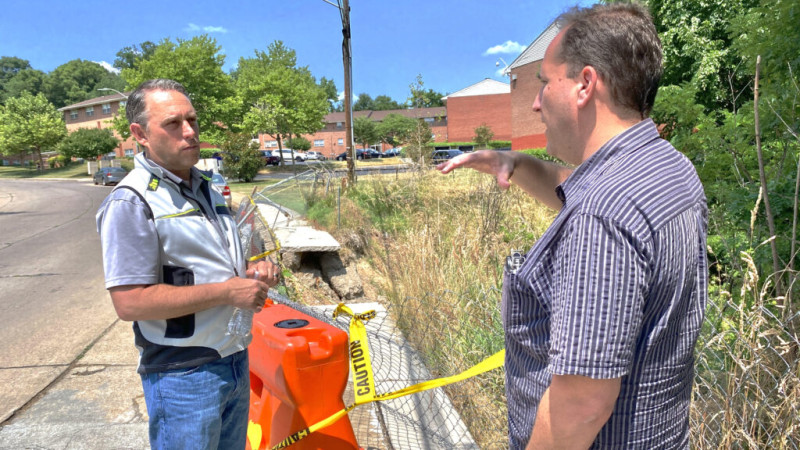
Rogers sees the Middle Branch Fitness and Wellness Center as a world-class community facility that rivals any other in the city’s more affluent sections. But Dana Smith, a Cherry Hill youth coach and community advocate, worries about gentrification—which he sees as inevitable—and wonders why the facility, originally planned for Cherry Hill, was moved and renamed to serve all of Middle Branch.
And where Rogers sees $7 million to $9 million a year in casino revenues giving his organization “unicorn” powers, Nicole Fabricant, a left-leaning anthropology professor from Towson State University and environmental activist working in South Baltimore, considers the casino funding inherently problematic—a tax on the poor.
Still, Rogers is undaunted. “We want to make sure that environmental justice is not a veneer on top of this project or a talking point for this project, but that the beneficiaries of the change need to be the communities that have borne these burdens,” Rogers said. “This is not a capital project with environmental justice elements. It’s an environmental justice project with capital elements.”
Resilient Shorelines
Having arrived at the empty parking lot next to the Medstar hospital, Rogers and Berkley gazed out on gentle waves of the Patapsco River shimmering under a high noon sun, splashing against the grassy coastline, an unkempt oasis at the edge of a buzzing, pulsating city. The Middle Branch waterfront offers scenic views of downtown four miles to the north. But it is not insulated from the violence that has gripped much of Baltimore: The hospital treated many of the victims of a July 1 mass shooting at nearby Brooklyn Homes that left two dead and 28 wounded.
“It’s largely invisible and overlooked but it has incredible assets,” Rogers said of the Middle Branch. “It’s got a surprisingly natural shoreline with eagles, cormorants and all kinds of wildlife.”
The parking lot gave Rogers and Berkley, a senior executive at Green Vest, an environmental consulting firm, a vantage point to visualize whether they could merge two funding streams. One, a grant from the Federal Emergency Management Administration, is designed to protect the hospital and a Baltimore Gas & Electric facility from storm damage with reconstructed wetlands and vegetated berms. The other, a possible new grant from the U.S. Department of Transportation, is aimed at protecting roads and transportation infrastructure from sea level rise, flooding, extreme weather events and other natural disasters.
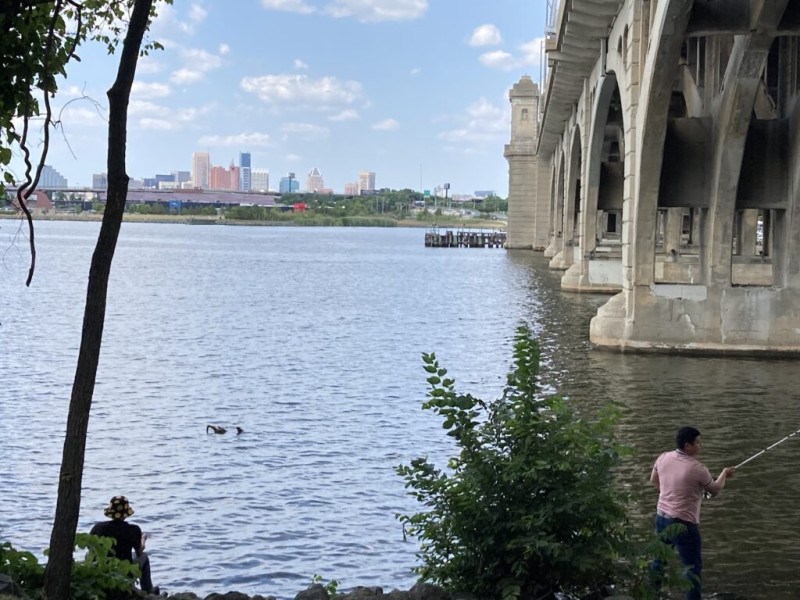
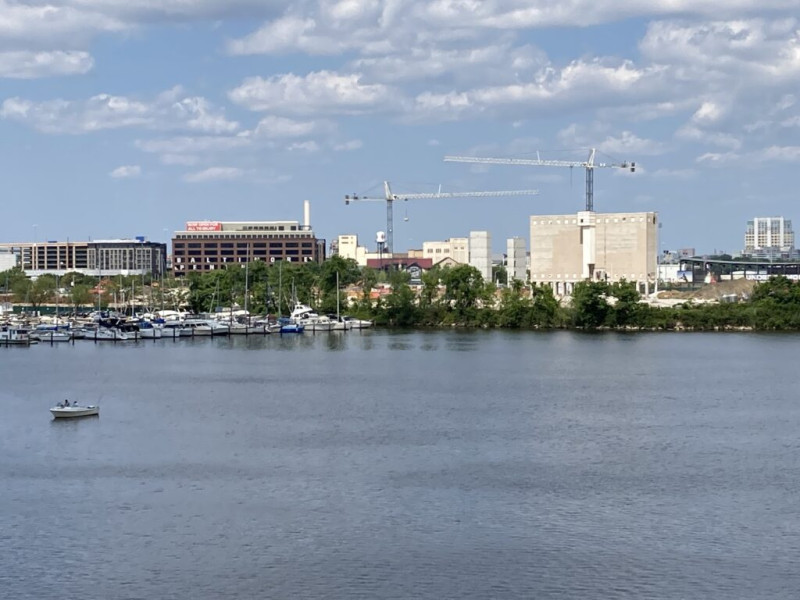
“Can we take what we’ve already done and expand it further?” said Rogers, who has a law degree and a master’s degree in environmental management from Duke University. He cut his teeth after law school in the 1990s working on HOPE VI public housing projects, which were built for low- and middle-income families and included both subsidized and market-rate units.
Then, from 2003 to 2008, Rogers opened up a family of “social enterprise” firms focused on rehabbing houses and constructing green buildings. And then he ran his own development and construction company in Baltimore before he took the reins of the South Baltimore Gate Project seven years ago.
He believes environmental conservation in the United States is fundamentally broken, focused on unspoiled wilderness instead of the places where people live. And he has come to see the interconnectedness of race, economic development and the environment through projects like Reimagine Middle Branch.
If industrialization after World War II had turned the neighborhoods to islands, as he believed, Rogers sees Reimagine Middle Branch is a way to reconnect them through new parks and public spaces, shared amenities, bike lanes, pedestrian bridges and waterways, which in turn will lead to economic mobility within those low-income, disinvested communities.
Baltimore has a long track record of environmental injustice, Rogers said, with incinerators, landfills and coal pits located next to communities of color. Developing parks, green spaces and amenities is the way to flip the script and address the longstanding injustices, he says.
“It is a transformational project. We are addressing the core issues of South Baltimore, and resiliency, public spaces, recreation [and] transportation are the core tools that we can use to heal a highly impacted set of communities,” he said.
Resilient shorelines lead to resilient communities, Berkley said, pointing at what used to be 3,000 acres of wetlands extending beyond the shoreline prior to the decades of industrialization. Now, under the Middle Brach Resiliency Initiative, an offshoot of the Reimagine Middle Branch plan, his firm is looking to reconstruct 50 to 100 acres of the lost wetlands reinforced with new vegetative berms acting as a natural barrier against climate-amplified storm surges and flooding.
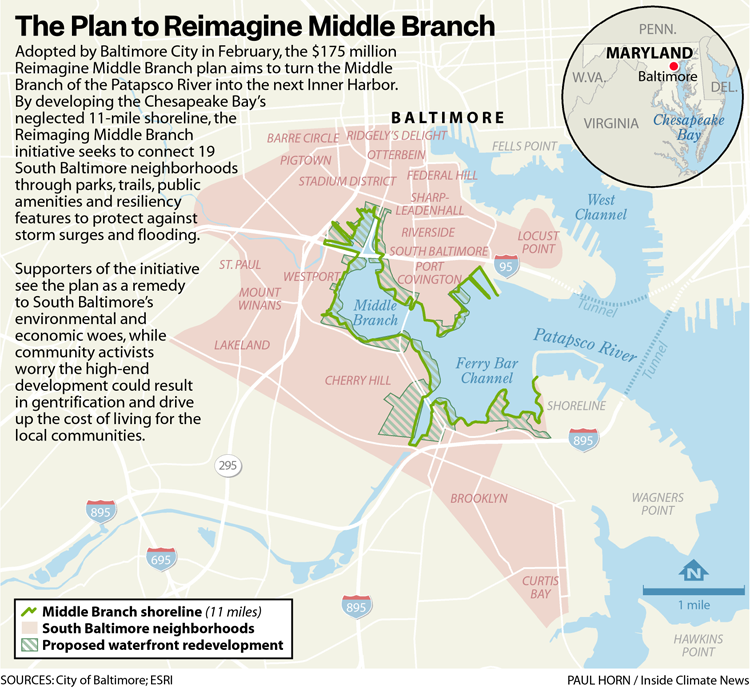
The parking lot where they brainstormed occupied a spot where the south fork of the Patapsco merged with its Middle Branch. At the western edge of the Middle Branch, Rogers said, a huge new waterfront park project called One Westport was underway. The developer was going to donate it to the city.
The park would include a memorial to South Baltimore sports legends, including the Baltimore Black Sox of the Negro leagues, which played right there in Westport. The club also played at the Maryland Baseball Park on a site now occupied by a waste-to-energy incinerator.
“They were incredible. They won the American Negro League Championship in 1929 and they’re invisible locally. So we want to elevate those stories,” Rogers said, explaining that his agency is designing a footbridge between Westport and the big, new Baltimore Peninsula retail, office and residential development where thousands of jobs are likely to be created over the coming years.
Just to the south of Westport, the Middle Branch Fitness and Wellness Center, he said, is already empowering people “to live an active and healthy lifestyle.”
Reimagine Middle Branch calls for adding anywhere from four to 12 more playing fields in the coming years. “We spent about half a million dollars a year on the South Baltimore Gateway Sports Network, where we hire grassroots nonprofit organizations to provide the sports in their own community,” he said.
Local teams like Cherry Hill Eagles and Westport Patriots each get $100,000 contracts to provide sports and supplement events like the Cherry Hill Arts and Music Waterfront Festival, which takes place every year on the Fourth of July and draws as many as 15,000 people.
Outside Forces
Dana Smith felt a vague sense of unease when a bus tour of Middle Branch this summer pulled up outside of the city-run fitness center.
The tour was organized by Cherry Hill Strong, the neighborhood nonprofit working closely with Rogers and Reimagine Middle Branch. Smith, a youth athletic coach and activist from Cherry Hill, was among about 20 local advocates, representatives of funding agencies and officials from the Environmental Protection Agency on board the classic streetcar with carriage-style wooden benches, retrofitted as a tour bus with air conditioning and tinted windows.
“Our next stop is going to be the wellness center that you’ll see to your right,” announced Zeevelle Nottingham-Lemon, the head of Cherry Hill Strong. She thanked Roger and Reimagine Middle Branch for helping fund what she called the type of “high-quality” facility the community deserved.
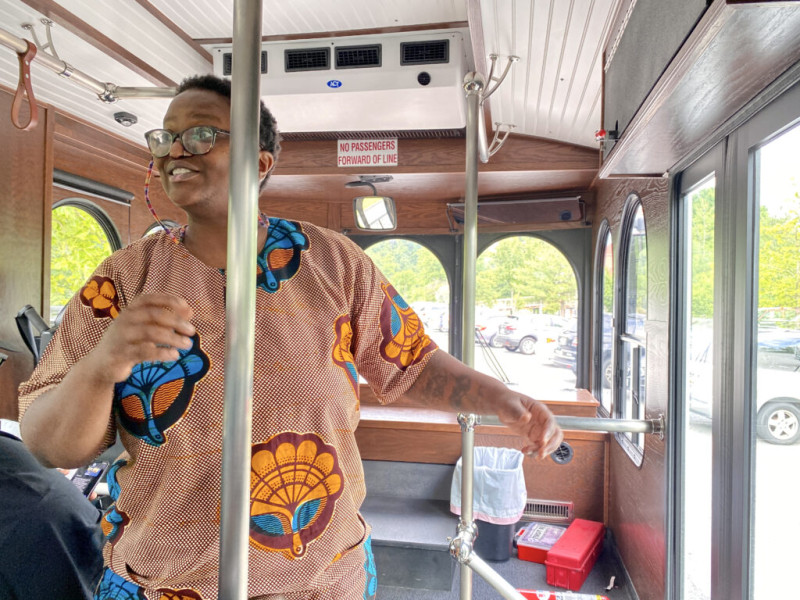
Zeevelle Nottingham-Lemon, the head of Cherry Hill Strong, gestures during the bus tour of Cherry Hill, which she had organized. The neighborhood tour was intended to showcase community projects such as blight reduction, affordable housing, educational programs and sports implemented by local community groups such as hers. Credit: Aman Azhar / Inside Climate News.
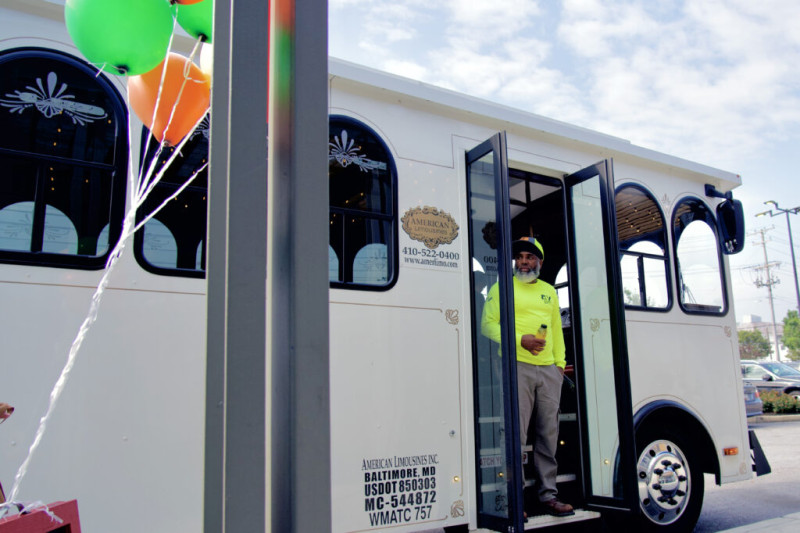
With its pools, fields and athletic facilities, the gleaming new facility stood out among the South Baltimore neighborhoods of Cherry Hill, Curtis Bay and Brooklyn, wracked by some of the highest asthma and cancer rates across the U.S. amid legacy pollution from industrial facilities in their midst—trash and medical-waste incinerators, coal piers, oil refineries and a landfill.
But Smith couldn’t help remembering that the center was originally designed as the Cherry Hill Fitness and Wellness Center on a different site within the neighborhood. He considered its eventual site, and its rebranding as a “Middle Branch” fitness and wellness center to serve kids and adults from multiple neighborhoods, as a sign of gentrification inevitably bearing down on Cherry Hill.
“It was strategically moved there so it can fit a bigger development scheme,” said Smith, 47, a Black man of medium height and stout build who wore a bright green sweatshirt, cargo pants and a baseball cap.
He’d seen how such outside forces played in the neighborhood. People tend to leave for new opportunities or growth because they don’t find it around them, he said, thanks to the nearby garbage dumps and other industrial facilities that make the blocks of modest row houses unsuited for new investment.
But then, at some point, those who stay often find themselves priced out of their own homes when amenities like the new fitness and wellness center and sports facilities coincide with development of luxury apartments that draw people with higher incomes to the neighborhood.
Smith sensed that a new rising middle-class image was being pushed on Cherry Hill, which is predominantly Black and lower-income, through the development projects around Middle Branch. And what pained him, he said, was the feeling of general helplessness in the face of larger forces that held sway over peoples’ lives. These projects were already well along the way, including new sports fields and the new and more resilient Middle Branch waterfront. All of it, he thought, felt vaguely traumatic.
Cherry Hill Strong
After Rogers and Berkley finished brainstorming in the MedStar parking lot, Rogers dropped his environmental consultant off at the City Garage, an old bus depot converted into a shared workspace, and headed for the Cherry Hill Strong offices in the Cherry Hill Town Center.
He had a meeting scheduled with Nottingham-Lemon, who led the bus tour of Cherry Hill. It had been intended to showcase community projects such as blight reduction, affordable housing, educational programs, and sports, implemented by local groups, including Cherry Hill Strong, with support from the South Baltimore Gateway Partnership and the city under the Reimagine Middle Branch plan. To Nottingham-Lemon, the tour displayed the potential of Cherry Hill to become a new and improved version of itself.
On the way, Rogers stopped and picked up another one of his community partners, the Rev. Richard Partlow, the interim executive director of Cherry Hill Development Corporation and a former U.S. Army veteran who had seen combat in Vietnam and had lived in and out of the neighborhood.
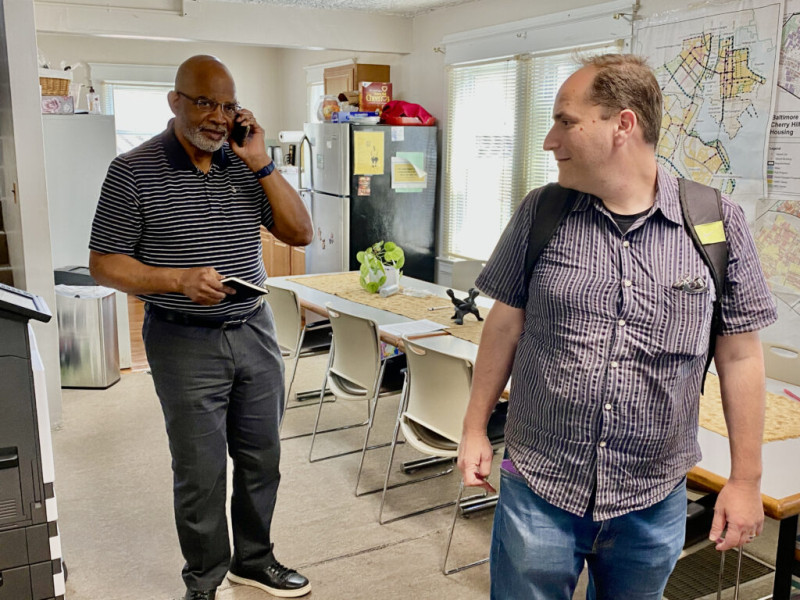
Nottingham-Lemon considers Rogers a valuable partner whose agency was playing a critical role in the area’s reinvestment. Rogers plugged in his computer to share a deck of PowerPoint slides on an overhead projector. They walked through a progression, from food desert to full-service grocery store.
Afterward, Rogers explained that small things like fixing a broken basketball hoop or replacing a bench with splinters opened up space to talk about creating bigger opportunities, such as bringing a grocery store to the neighborhood, or creating kayaking programs and world-class football fields for kids from low-income households.
The issues of race, economic development and environment are all interconnected and, in his present position, he said he was striving to invest in projects that turned under-developed real estate such as the Middle Branch shoreline into something attractive for private investment. This, in turn, would put local skills to use and create jobs. Or at least that is the plan.
Good Guys and Bad Guys
Nicole Fabricant walked outside Benjamin Franklin High School where she has been tutoring youth this summer in an environmental justice summer program, which involved collecting and analyzing air quality data to be able to litigate against polluters such as CSX, the freight railroad company. It operates coal piers here in Curtis Bay, another South Baltimore neighborhood south of Cherry Hill.
Fabricant, the anthropology professor at Towson State University and environmental justice activist in Curtis Bay, carried boxes full of board games designed to help students grasp the themes in a 2021 book by Baltimore academic and activist Lawrence T. Brown, “The Black Butterfly: The Harmful Politics of Race and Space in America.”
“It teaches youth the history of redlining in an embodied way,” she said.
Fabricant, who has spent her career researching marginalized communities in Latin America and, now, South Baltimore, wasn’t convinced that all of the redevelopment taking place in this part of the city would come to significantly benefit the low-income and working-class people who lived there.
Baltimore Peninsula, the emerging complex of offices, retail space and luxury apartments that was dreamed up over a decade ago by the founder of Under Armour, feels to Fabricant like something that will ultimately end up displacing current residents. While some of the residences have been set aside as affordable housing, she said, her big question is, affordable to whom?
Reimagine Middle Branch, she said, doesn’t deal with the legacy industries, including coal piers and the giant incinerator that burns much of Baltimore’s trash, that have polluted South Baltimore’s neighborhoods.
“You can’t simply turn a community through biking routes and green spaces into a livable and healthy community,” she said. “And yet, that’s where we are today in a kind of neoliberal economy. It’s all about the private sector stepping in where the public investment has been eroded.”
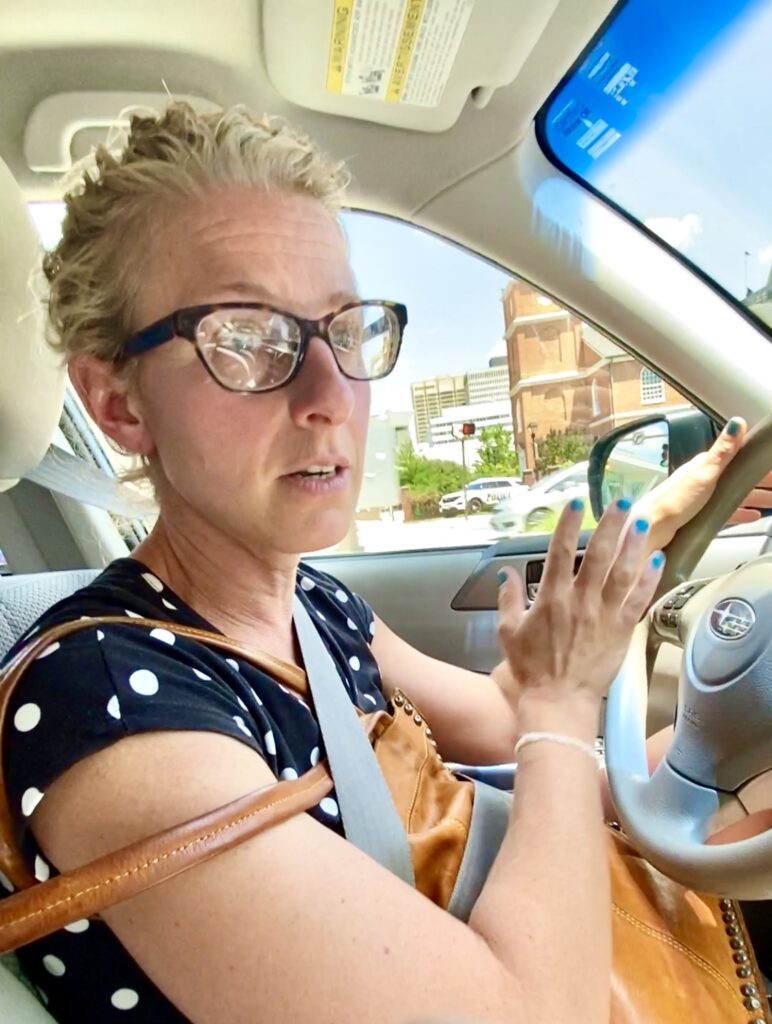
A spokesperson for Under Armour responded in writing that the company “is committed to Baltimore’s success and long-term economic growth. We are pleased to be a part of the redevelopment of the Baltimore Peninsula, which has sat vacant and underutilized for years.”
Under Armour is committed to sustainable design at Baltimore Peninsula, the spokesperson said, and added that private developers are collaborating and working together with the nonprofit South Baltimore 7 Coalition, specifically created to extend the benefits of the economic activities to the communities in and around the Baltimore Peninsula.
Michael Middleton, executive director of the SB7 coalition—shorthand for seven South Baltimore communities slated to receive the benefit from the private development projects underway—said its creation “uniquely empowers our communities to determine how we receive and allocate resources generated by Baltimore Peninsula.
“Given the long history of environmental injustice perpetrated on our communities, we’ve chosen to dedicate significant portions of this funding to improving this situation,” he said.
Middleton added that the existence of the coalition and its permanent status is useful to advocate for broader public policy changes for South Baltimore, such as breaking the reliance on the incinerator that pollutes the communities and factoring in zero waste policy instead.
Beyond the Peninsula development, Fabricant said she finds the concept of casino-funded economic development inherently problematic. “To me, it feels like one more predatory industry profiting off of poor people being desperate,” she said.
Rogers finds the analysis reductive. “Maryland voters legalized slot machine gambling in a constitutional referendum years ago and it should be harnessed to improve the community. I’m proud that that’s what we’re doing,” he said, adding that Reimagine Middle Branch goes beyond bike lanes and parks and, through a range of projects, responds to the historic environmental justice burdens in addition to spurring equitable economic development.
From his vantage point in Cherry Hill, Dana Smith, the youth coach, also views the Baltimore Peninsula project warily. “You can’t have a poor community next to a billion-dollar development scheme. Who’s going to eat at the new bakery shop or buy the new condo?” Smith asked.
But Smith lives in the real world and knows that leaders from his community, such as Nottingham-Lemon and Partlow, have been deeply involved in Reimagine Middle Branch. “Listen, it’s not necessarily a bad thing that’s happening,” he said. “Gentrification ain’t all bad unless it displaced the resident community.”
“I take the gentrification question very seriously,” Rogers said, pointing out that his organization provided funding to Cherry Hill Development Corporation to renovate vacant row houses to create permanent affordability, which, he said, was urgent and necessary. “But it is not a successful strategy to generate affordability by driving down quality of life,” he added.
At the end of the day, Rogers said that is his role—to make sure all of the redevelopment serves and benefits the community. He’s been occupying this space throughout his career, working in public housing that fostered community and rehabbing housing as he looked for ways to bring the public and private sectors together.
But he also believes that developing parks, green space and amenities in underserved and disinvested neighborhoods can bring new vitality and real economic opportunity as long as the community is involved every step of the way—”booing the bad guys and cheering the good guys,” he said.
Government has a huge role to play in setting the rules and providing capital and infrastructure funding to make sure communities aren’t counted out, he said. But like it or not, in our system, the players on the field are often in the private sector, he said, and they’re the ones who are generating the built environment that we live in.
Share this article
Disclaimer: The copyright of this article belongs to the original author. Reposting this article is solely for the purpose of information dissemination and does not constitute any investment advice. If there is any infringement, please contact us immediately. We will make corrections or deletions as necessary. Thank you.







